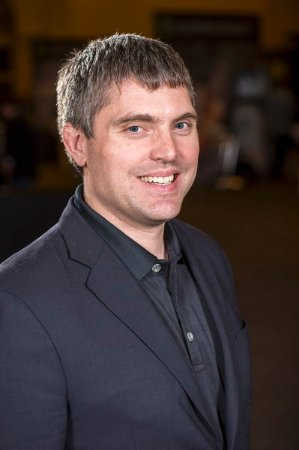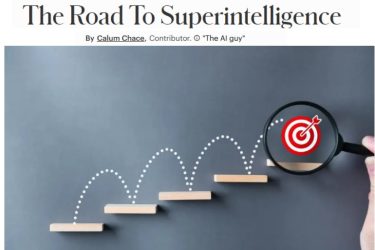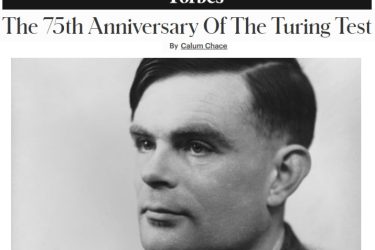Guest post by Matt Buskell, head of customer engagement at Rainbird
One day back in 1999, I was sitting in a TV studio with a client. We were being interviewed about something called the world wide web. The interviewer was asking if it would change the world. It seems silly to say that now, but it was all very new back then.
The interviewer asked, “do you think this technology will transform your business?” The client was Peter Jones of Siemens, who was one of the most impressive transformation leaders I have ever met. He replied “Yes, but we need to be careful that we don’t just speed up the mess”.

What Peter meant was that applied without sufficient thought, technology doesn’t create a better process, just a faster one. It’s an observation I’ve thought about often over the years, and it is still as relevant now as it was back then.
We currently have clients in several different industries using robotic process automation (RPA). This is software (a “robot”) which captures and interprets existing applications to process a transaction; manipulating data, triggering responses, and communicating with other digital systems.
As Andrew Burgess, one of the most experienced consultants in this space, says, “RPA is already delivering huge benefits to businesses. By automating common processes, it reduces the cost of service whilst increasing accuracy and speed. But one of the biggest challenges for any automation project is to embed decision making.”
The next generation of RPA promises to automate even more, by applying Artificial Intelligence (AI). Using natural language processing, robots can read unstructured text and determine workflow; they can make auditable decisions and judgements.
But there is still a danger of simply speeding up the mess.
To check for this, we often ask clients, “Could you improve your efficiency by moving some of the decisions in your process flow further upstream?”
Consider this. A sales person aided by an AI co-pilot can provide the same value to a customer as a lawyer could. A call centre agent can become an underwriter, and a fitness instructor can become a physiotherapist. The co-pilot provides the human with knowledge and judgements far beyond their innate level of understanding.

Taxi drivers use mapping software as their co-pilots today. If they did not have the software they would have to learn the maps themselves, and not everyone has the patience to spend three years or more “doing the knowledge” which makes London’s black cab drivers so impressive.
An AI cannot mimic all the knowledge and understanding of a lawyer, but that’s not what we are asking it to do. We are asking it to make very specific judgements in very specific situations – and to do that on a massive scale.
Take an insurance help-desk. A customer sends a message saying, “I just had an accident; the other driver’s name was XYZ and their insurance company was ABC”. The RPA reads the text, determines that it’s a claim, creates a case file and adds it into the company’s workflow.
We have potentially cut out a call and automated several steps that the call centre agent would have gone through. We have saved time. So far, so good.
However, the case file still must follow a “First Notice of Loss” (FNOL) process and must still be reviewed by a liability expert to determine which party was at fault. It can take another 40 steps until the case reaches a recovery agent who tries to claim a settlement from the other insurer.
So the AI has been helpful but not yet transformative, because we are still following the same business process as before.
Now imagine you could take the knowledge of the liability expert and the recovery expert and graft it into the claims process system. The AI can make the same decisions that these experts would have made, but by connecting them we can change the process. Whereas liability would traditionally have been determined around step 12 in the process and recovery would have started around step 30, this can now all happen at step 1. There is a ripple effect on the number of follow-on steps, and the whole process becomes much faster.

Companies like Accredita are doing this for the FNOL process and making the technology available to insurers. Consultancies like Ernst and Young and PwC are evaluating the overall claims process and figuring out other ways that cognitive reasoning could change the business process. Large banks are assessing how cognitive reasoning and RPA can be used to automate and enhance the identification of credit card fraud.
Re-visiting our map analogy, RPA gets you to the right page on the map for your journey, while cognitive reasoning takes the map it has been given and calculates the route for you.
Peter has retired, but if he was still working he would surely agree there is a fundamental shift in what can be achieved with business processes. Significant limitations have been removed and with that comes a massive opportunity to do much more than just “speed up the mess”.
The second question asked in the interview back in 1999 was “How do you figure out where the value is in this new technology?”. Peter’s answer to that was “You won’t know until you get out there and try it”. That still holds true today.

Matthew Buskell has been helping companies be more innovative since 1996, when he graduated from Birmingham University with a degree in Cognitive Psychology and Software Engineering. He has helped clients navigate a series of technological waves: the Internet, Mobile, Big Data, and now Artificial Intelligence. He was on the SAP UK board until 2016 when he became head of customer engagement at Rainbird, a leading Cognitive Reasoning engine that is re-defining decision-making with AI in Financial Services and Insurance.
Andrew Burgess is a management consultant, author and speaker with over 25 years’ experience. He is considered an authority on innovative and disruptive technology, artificial intelligence, robotic process automation and impact sourcing. He is a former CTO who has run sourcing advisory firms and built automation practices. He has been involved in many major change projects, including strategic development, IT transformation and outsourcing, in a wide range of industries across four continents. He is a member of the Advisory Boards of a number of ambitious disruptive companies.


